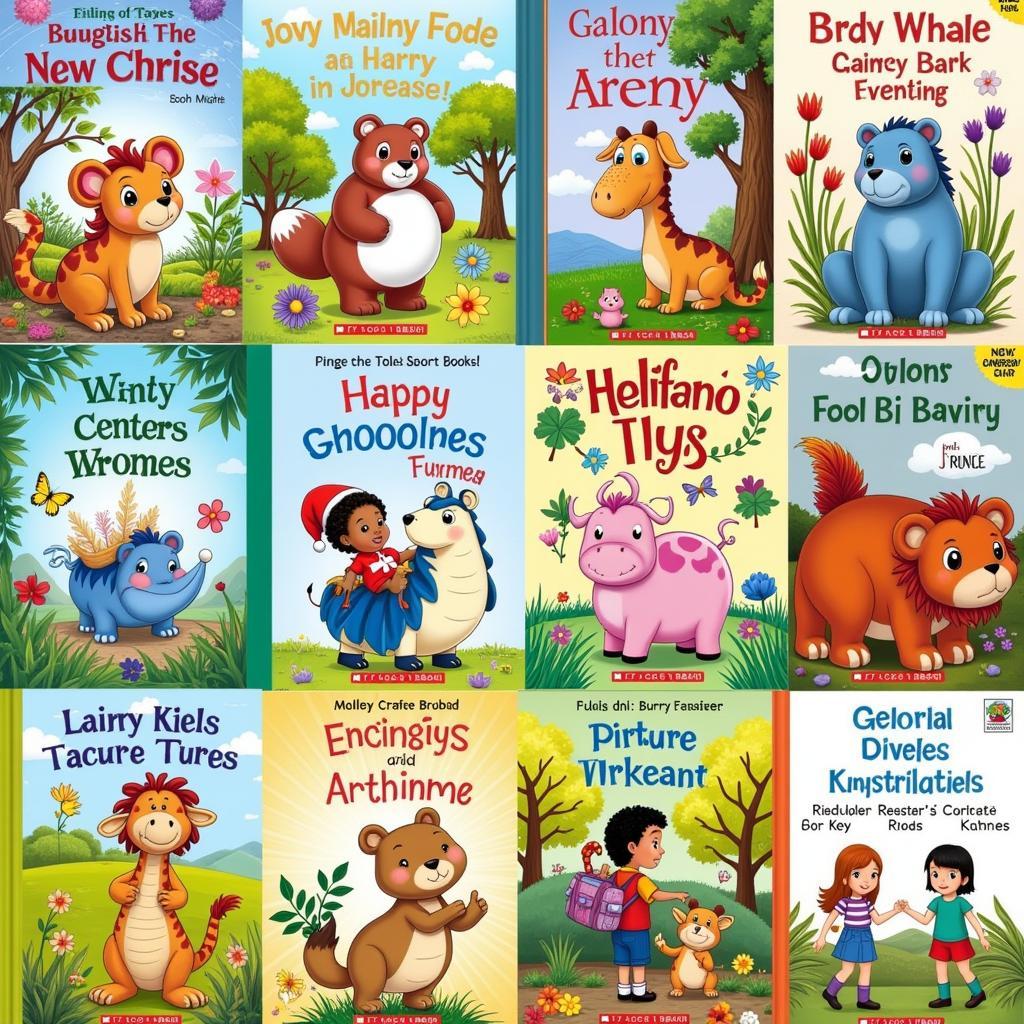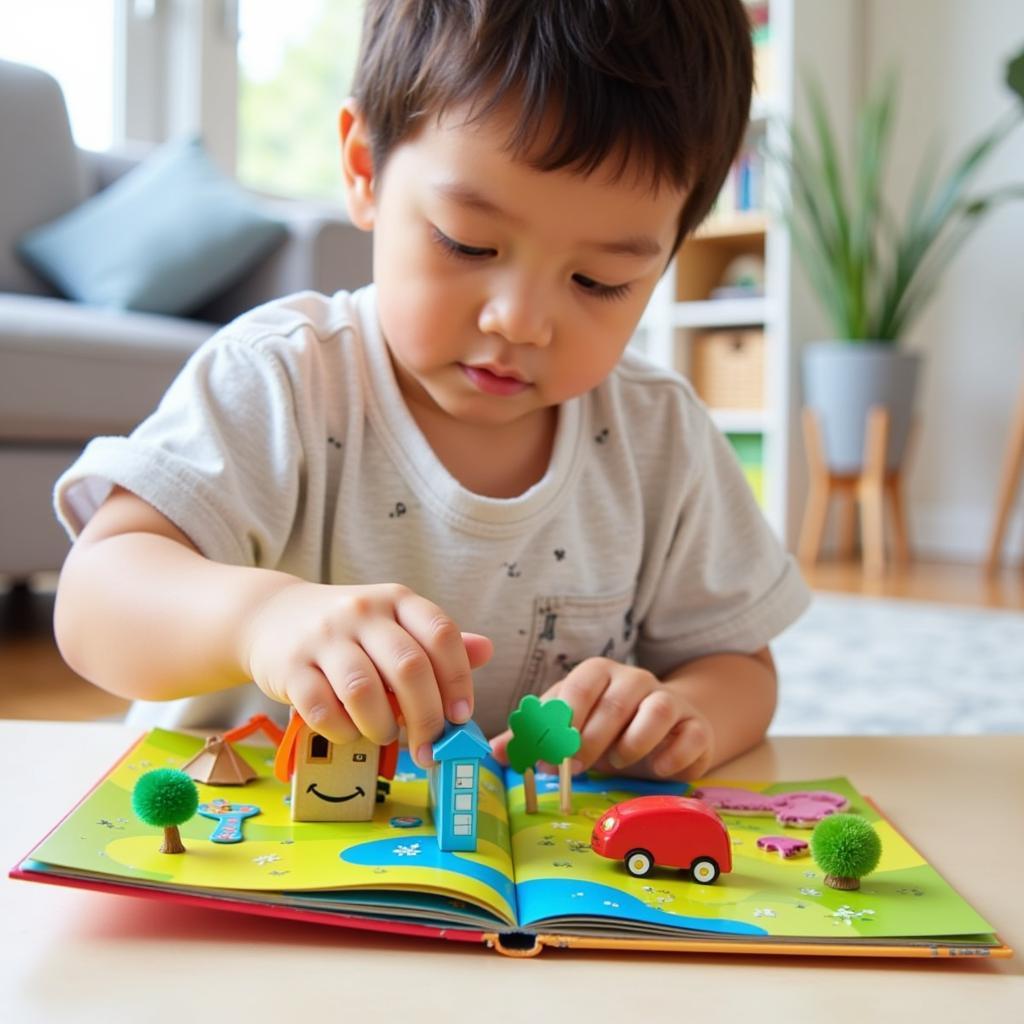Have you seen any color children’s book lately? The world of children’s literature is bursting with vibrant colors, sparking imagination and fostering a love for reading. From classic picture books to interactive pop-up books, color plays a crucial role in engaging young minds and creating unforgettable reading experiences. Let’s explore the fascinating impact of color in children’s books and how it shapes a child’s development.
The Importance of Color in Children’s Books
Color is more than just an aesthetic element in children’s books; it’s a powerful tool that contributes significantly to a child’s cognitive, emotional, and social development. Bright, primary colors capture a child’s attention, while subtle hues can evoke a range of emotions. Color helps children understand the world around them, identify objects, and differentiate between characters. Moreover, it enhances the storytelling process, making narratives more engaging and memorable.
How Color Enhances Storytelling
Color can set the mood and atmosphere of a story. Think of a dark, stormy night depicted in shades of blue and gray versus a bright, sunny day illustrated with vibrant yellows and oranges. Color also helps children connect with characters and their emotions. A character wearing red might signify anger or excitement, while a character dressed in blue could represent calmness or sadness.
- Creating Visual Interest: Color attracts a child’s eye and encourages them to explore the pages of a book. Intricate patterns and contrasting colors can stimulate visual development and enhance their perception of the world.
- Emotional Connection: Colors evoke emotions and help children understand the feelings of the characters in the story. A sad scene might be depicted in muted tones, while a joyous occasion could be illustrated with bright, cheerful colors.
- Cognitive Development: Color helps children categorize and identify objects, fostering their cognitive skills. Learning color names and associating them with different objects is an essential part of early childhood development.
 Exploring Vibrant Illustrations in Colorful Children's Books
Exploring Vibrant Illustrations in Colorful Children's Books
Choosing the Right Color Palette for Children’s Books
The color palette of a children’s book is carefully chosen to align with the story’s theme, target age group, and desired emotional impact. For younger children, bright, primary colors are often used to capture their attention and stimulate their senses. As children grow older, more complex color schemes can be introduced to convey a wider range of emotions and create more nuanced visual experiences.
Color Psychology in Children’s Literature
“Color plays a vital role in children’s literature,” says Dr. Amelia Hughes, a child psychologist specializing in early childhood development. “It can influence a child’s mood, behavior, and understanding of the world around them.”
- Warm Colors: Reds, oranges, and yellows are often associated with energy, excitement, and happiness. These colors are commonly used in books aimed at younger children to create a sense of fun and playfulness.
- Cool Colors: Blues, greens, and purples can evoke feelings of calmness, tranquility, and peace. These colors are often used in books that deal with themes of nature, bedtime stories, or calming narratives.
Exploring Different Types of Color Children’s Books
From classic picture books to interactive pop-up books, there’s a wide variety of color children’s books available to cater to every child’s interests and reading level.
- Board Books: These durable books are perfect for babies and toddlers, featuring simple illustrations and bright colors.
- Picture Books: These books rely heavily on illustrations to tell the story, with color playing a crucial role in conveying emotions and creating visual appeal.
- Pop-up Books: These interactive books bring stories to life with 3D elements and vibrant colors, engaging children on a multi-sensory level.
“Choosing the right color children’s book can enhance a child’s reading experience and foster a lifelong love for literature,” adds Maria Rodriguez, a children’s book illustrator with over 20 years of experience.
Engaging with Color in Interactive Children’s Books
Interactive children’s books incorporate color in innovative ways to encourage children’s active participation. Touch-and-feel books, lift-the-flap books, and coloring books allow children to interact with the story through color, further enhancing their learning and engagement.
 Interactive Color Children's Books Engaging Young Readers
Interactive Color Children's Books Engaging Young Readers
Conclusion: Have You Seen Any Color Children’s Book That Sparks Joy?
Have you seen any color children’s book that truly captivated your attention? Color is an integral part of children’s literature, shaping their understanding of the world, evoking emotions, and fostering a love for reading. By choosing books with vibrant and engaging color palettes, we can create enriching reading experiences that will stay with children for a lifetime.
FAQ
- What are the benefits of reading color children’s books?
- How does color impact a child’s cognitive development?
- What are some popular color children’s books?
- How can I choose the right color children’s book for my child’s age?
- Are there any resources for finding free color children’s books online?
- How can I incorporate color into storytelling activities with my child?
- What are the best ways to preserve color children’s books?
Need support? Contact us at Phone: 0373298888, Email: [email protected] or visit our address: 86 Cau Giay, Hanoi. We have a 24/7 customer support team.
